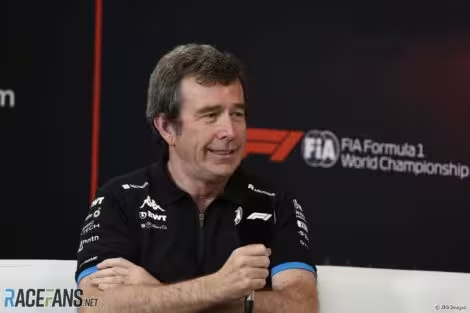When the FIA confirmed Formula 1’s new power unit regulations for 2026 two years ago, it fired the starting gun on development for the championship’s manufacturers.
For Renault, the new rules represented an opportunity to draw a line under a generation of rules it failed to master. Together with Red Bull, it swept the final championships of the V8 era, but the arrival of the V6 hybrid turbos brought that to a sudden halt.
Red Bull eventually ditched them for Honda, with whom they have enjoyed great success. Renault revived its works team, but aside from a single win in Hungary three years ago, has enjoyed little success since.
Alpine team principal Bruno Famin lobbied unsuccessfully for the manufacturer to receive a break from the freeze on power unit development introduced two years ago, in order to reduce its disadvantage to rival designs. Having lost that argument, attention focused on their plans for 2026.
Famin is full of praise for the work Renault has done preparing for 2026 at its Viry-Chatillon engine division. “The guys in Viry are making an amazing job,” he said.
“We all know that since 2014, we don’t have the best engine in Viry, but it’s one of the engines which improved the most since 2014. And now, we’re still not exactly at the top, but the improvement has been very good.
“The job which is being done in Viry to prepare the 2026 engine is incredible. We fixed a very high target and I am confident that we can reach that target. The figures we have from the dyno are very good.”
Advert | Become a RaceFans supporter and
Despite this, the manufacturer is poised to end its in-house F1 engine development and revert to customer team status for 2026.
On the face of it, this is an incomprehensible decision. Everyone remembers the scale of the advantage Mercedes enjoyed when the current engine rules were introduced because they designed their own power unit as well as their own chassis. Why would any manufacturer surrender an advantage which has the potential to make them F1’s next dominant force?
Famin’s explanation is that Alpine wish to redeploy Viry-Chatillon’s staff to work on other projects relating to its expanding line-up of road cars. He made it explicitly clear that the change in strategy will not lead to any redundancies.
“We have presented a project,” he explained. “The project is not the power unit, the project is much bigger than…
Click Here to Read the Full Original Article at RaceFans…

